EXPLORATION: Earthquakes and Volcanoes
3. Structures due to Volcanism
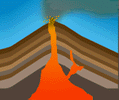 Volcanism: the process involving the transfer of magma from one area to another.
Volcanism: the process involving the transfer of magma from one area to another.
Extrusive Forms
- if large volumes of lava cover existing landforms, a plateau may result. eg Columbia Lava Plateau in northwestern USA covers over 500 000 sq. km
with lava up to 0.8 km in depth - when a small opening is made in the crust and lava and other material gradually build up a cone-shaped structure surrounding the opening, this formation is known as a volcano
- the funnel-shaped opening at the top of the cone is known as the crater
- if a composite cone volcano erupts so violently that much of the
magma from the cone is ejected, it is left with little support,
resulting in an inward collapse of the cone leaving behind a depression
known as a caldera
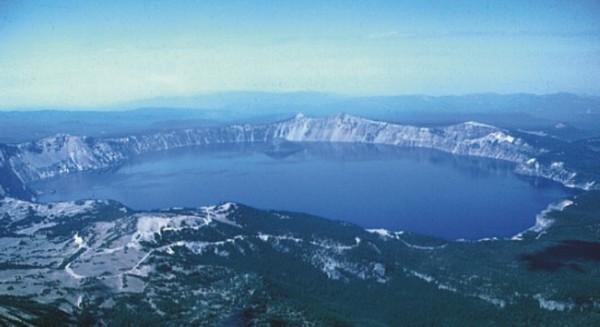
Courtesy: USGS
Intrusive Forms
Due to magma that solidifies in cracks and cavities that it has made as it forces the surrounding rock apart.
- wall or dike:magma that cools in a vertical crack
- sill: magma that flows between strata of sedimentary rock forming a thin but extensive sheet
- laccolith: dome of igneous rock formed from a large enough volume of magma to raise up the overlying strata
- batholith: a huge storage basin of magma several kilometres thick.

Courtesy: University of Wisconsin - La Crosse -
Note: It is possible for these features to become exposed at the surface over time due to weathering and erosion of the surrounding rock such as with the old volcanic neck below.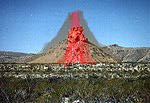 volcanic neck or plug: volcanoes,
of course, are extrusive igneous features -- but part of a volcano
cools underground and is considered an intrusive igneous feature. This
feature is known as the volcanic neck or plug.
volcanic neck or plug: volcanoes,
of course, are extrusive igneous features -- but part of a volcano
cools underground and is considered an intrusive igneous feature. This
feature is known as the volcanic neck or plug.
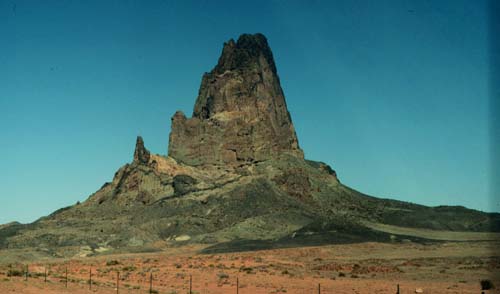
Courtesy: Texas A & M University
Destructive influences of Volcanoes
- some eruptions can cause great loss of life eg Krakatoa in 1883 (caused great sea waves which drowned 40 000 people in neighbouring islands; Mt. Pelee in 1902 (outpourings of gases killed 30 000 people).
- some eruptions can cause great damage to property eg Vesuvius buried the city of Pompeii with ash
Constructive influences of Volcanoes
- some lava outpourings have weathered to give fertile soils eg in Java, the northwestern-part of the Deccan Plateau, and the plains around Etna. These regions are of important agricultural value.
- volcanic activity sometimes results in the formation of precious stones and minerals. These occur in some igneous and metamorphic rocks. eg copper deposits of Butte, USA, nickel deposits of Sudbury, Canada.
Hot Springs
Superheated water which flows quietly to the surface after being heated by volcanic rocks forms hot springs.
Geothermal steam and hot water are used locally in New Zealand and Iceland to heat homes, dry crops, grow tropical prawns and heat swimming pools. Note: the white material in the video is steam.
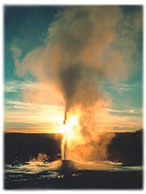 Geysers
Geysers
Superheated water which is thrown out with great force and accompanied by steam is a geyser.